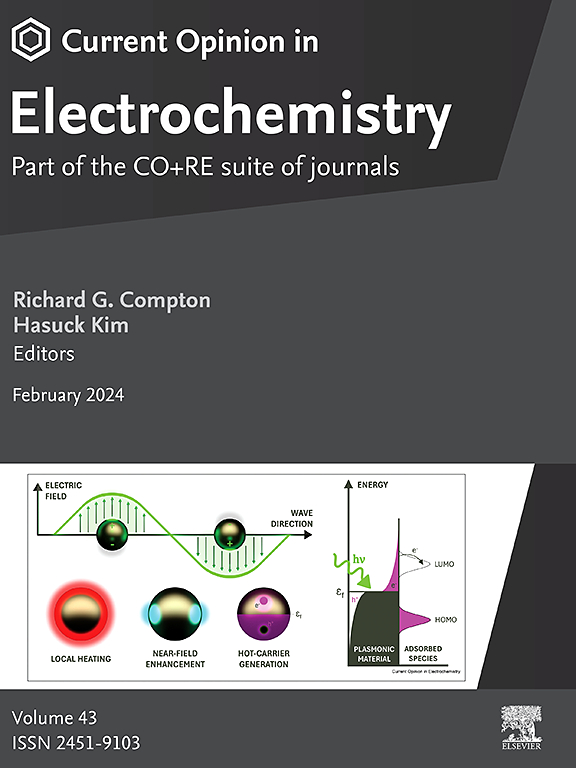Electronic structure methods for simulating the applied potential in semiconductor electrochemistry
IF 6.9
2区 化学
Q1 CHEMISTRY, PHYSICAL
引用次数: 0
Abstract
Semiconductor electrodes (SCEs) play a decisive role in clean energy conversion technologies but understanding their complex electrochemistry remains an outstanding challenge. Herein, we review electronic structure methods for describing the applied electrode potential in simulations of semiconductor–electrolyte interfaces. We emphasize that inclusion of the electrode potential is significantly more challenging for SCEs than for metallic electrodes because SCEs require accurate models of semiconductor capacitance, including the space-charge region and surface effects, as well as the electrolyte double-layer capacitance. We discuss how these physicochemical complications challenge the development of atomistic models of SCE and how they impact the applicability of the computational hydrogen electrode, capacitance correction, grand canonical DFT, and Green function methods to model SCEs. We highlight the need for continued methodological development and conclude that integrating advanced atomistic models of SCEs with grand canonical, constant inner potential DFT or Green function methods holds promise for accurate SCE simulations.
模拟半导体电化学应用电位的电子结构方法
半导体电极(SCEs)在清洁能源转换技术中起着决定性的作用,但了解其复杂的电化学仍然是一个突出的挑战。在此,我们回顾了用于描述半导体-电解质界面模拟中外加电极电位的电子结构方法。我们强调,与金属电极相比,包含电极电位对sce来说更具挑战性,因为sce需要精确的半导体电容模型,包括空间电荷区域和表面效应,以及电解质双层电容。我们讨论了这些物理化学复杂性如何挑战SCE原子模型的发展,以及它们如何影响计算氢电极、电容校正、大正则DFT和格林函数方法对SCE建模的适用性。我们强调了继续发展方法的必要性,并得出结论,将SCE的先进原子模型与大正则、恒定内势DFT或格林函数方法相结合,有望实现精确的SCE模拟。
本文章由计算机程序翻译,如有差异,请以英文原文为准。
求助全文
约1分钟内获得全文
求助全文
来源期刊

Current Opinion in Electrochemistry
Chemistry-Analytical Chemistry
CiteScore
14.00
自引率
5.90%
发文量
272
审稿时长
73 days
期刊介绍:
The development of the Current Opinion journals stemmed from the acknowledgment of the growing challenge for specialists to stay abreast of the expanding volume of information within their field. In Current Opinion in Electrochemistry, they help the reader by providing in a systematic manner:
1.The views of experts on current advances in electrochemistry in a clear and readable form.
2.Evaluations of the most interesting papers, annotated by experts, from the great wealth of original publications.
In the realm of electrochemistry, the subject is divided into 12 themed sections, with each section undergoing an annual review cycle:
• Bioelectrochemistry • Electrocatalysis • Electrochemical Materials and Engineering • Energy Storage: Batteries and Supercapacitors • Energy Transformation • Environmental Electrochemistry • Fundamental & Theoretical Electrochemistry • Innovative Methods in Electrochemistry • Organic & Molecular Electrochemistry • Physical & Nano-Electrochemistry • Sensors & Bio-sensors •
 求助内容:
求助内容: 应助结果提醒方式:
应助结果提醒方式:


